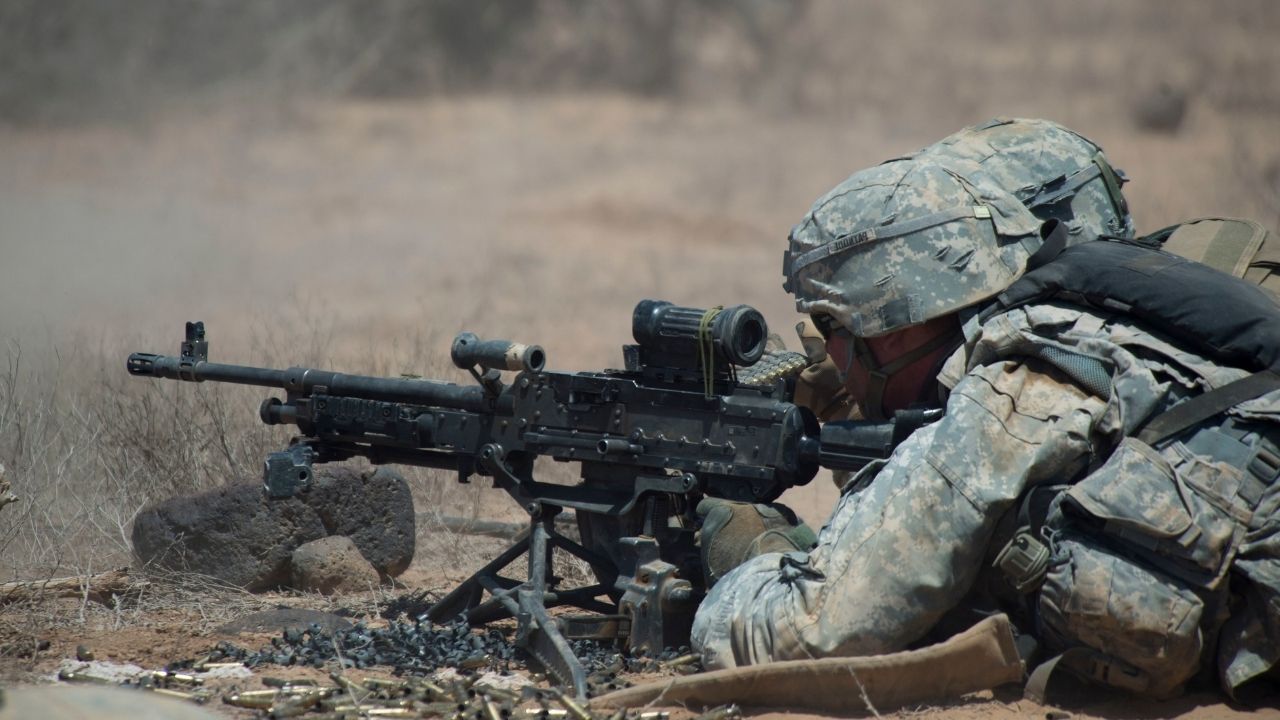
Operation Enduring Freedom – Horn of Africa (OEF-HOA) is a significant chapter in modern military history. Launched in 2002, this mission aimed to combat terrorism and promote stability in the region. Why did the United States initiate OEF-HOA? The primary goal was to disrupt terrorist networks and prevent the spread of extremism. This operation involved multiple countries, including Djibouti, Ethiopia, Kenya, and Somalia. What makes OEF-HOA unique? Unlike other military operations, it focused heavily on humanitarian efforts, such as building schools and providing medical care. This approach aimed to win hearts and minds, reducing the appeal of extremist ideologies. Curious about the impact and challenges faced? Keep reading to uncover 25 intriguing facts about this pivotal mission.
Key Takeaways:
- Operation Enduring Freedom – Horn of Africa (OEF-HOA) is a military mission that aims to fight terrorism and promote stability in the Horn of Africa region. It involves multiple countries and includes humanitarian efforts.
- OEF-HOA has successfully reduced piracy, trained local military forces, improved infrastructure and healthcare, enhanced regional cooperation, and increased stability in certain areas.
What is Operation Enduring Freedom – Horn of Africa?
Operation Enduring Freedom – Horn of Africa (OEF-HOA) is a military mission aimed at countering terrorism and promoting stability in the Horn of Africa region. This operation involves multiple countries and various military strategies.
- OEF-HOA began in 2002 to combat terrorism and piracy in the Horn of Africa.
- The operation is part of the broader Global War on Terrorism initiated after the September 11, 2001 attacks.
- Countries involved include the United States, Djibouti, Ethiopia, Kenya, and Somalia, among others.
- The primary base of operations is Camp Lemonnier in Djibouti, a former French Foreign Legion base.
- The mission includes humanitarian efforts such as building schools, digging wells, and providing medical care.
Key Objectives of OEF-HOA
The operation has several key objectives aimed at stabilizing the region and reducing the influence of terrorist groups.
- One main goal is to disrupt terrorist networks like Al-Shabaab and Al-Qaeda.
- Training local military forces to handle security threats independently is another crucial objective.
- Providing humanitarian aid to win the hearts and minds of local populations.
- Conducting counter-piracy operations to ensure safe passage for commercial vessels.
- Supporting regional governments in establishing effective governance and rule of law.
Humanitarian Efforts and Community Engagement
OEF-HOA isn't just about military action. Humanitarian efforts play a significant role in the mission.
- Medical teams provide essential healthcare services to remote villages.
- Engineers build and repair infrastructure, including roads, schools, and hospitals.
- Water purification projects help provide clean drinking water to communities.
- Educational programs aim to improve literacy and vocational skills.
- Agricultural initiatives support local farmers with modern techniques and tools.
Challenges Faced During the Operation
Despite its noble goals, OEF-HOA faces numerous challenges that complicate its mission.
- The region's complex political landscape makes it difficult to achieve lasting peace.
- Frequent attacks by terrorist groups pose constant threats to both military and civilian personnel.
- Piracy remains a persistent issue, affecting international shipping lanes.
- Humanitarian efforts are often hindered by logistical challenges and security concerns.
- Climate and terrain make operations difficult, with extreme heat and rugged landscapes.
Successes and Milestones
Despite the challenges, OEF-HOA has achieved several significant milestones.
- Reduction in piracy incidents due to increased naval patrols and security measures.
- Successful training of local military forces, enhancing their capability to combat terrorism.
- Improved infrastructure and healthcare in many communities, thanks to humanitarian projects.
- Enhanced regional cooperation among participating countries, fostering better diplomatic relations.
- Increased stability in certain areas, making them safer for residents and visitors alike.
Final Thoughts on Operation Enduring Freedom – Horn of Africa
Operation Enduring Freedom – Horn of Africa (OEF-HOA) played a crucial role in combating terrorism and promoting stability in a volatile region. Launched in 2002, this mission aimed to disrupt terrorist networks, provide humanitarian assistance, and support regional governments. The operation saw collaboration between U.S. forces and local partners, leading to significant achievements in counterterrorism and capacity-building. OEF-HOA also focused on improving infrastructure, healthcare, and education, positively impacting local communities. Despite challenges, the mission's efforts contributed to a safer and more stable Horn of Africa. The legacy of OEF-HOA underscores the importance of international cooperation and sustained commitment to addressing global security threats. As we reflect on this operation, it's clear that the lessons learned and partnerships forged will continue to shape future endeavors in the region.
Frequently Asked Questions
Was this page helpful?
Our commitment to delivering trustworthy and engaging content is at the heart of what we do. Each fact on our site is contributed by real users like you, bringing a wealth of diverse insights and information. To ensure the highest standards of accuracy and reliability, our dedicated editors meticulously review each submission. This process guarantees that the facts we share are not only fascinating but also credible. Trust in our commitment to quality and authenticity as you explore and learn with us.
